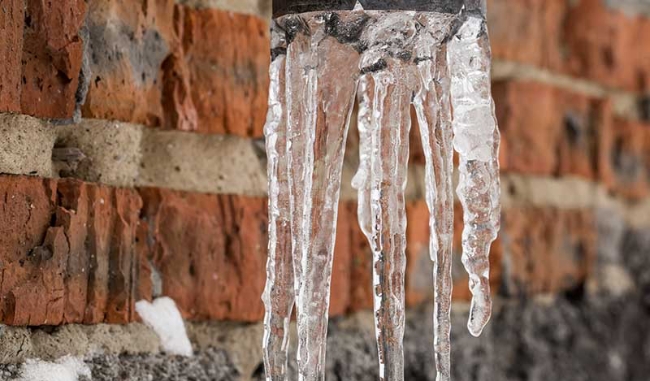Ways to Protect Pipes from Freezing Damage: Important Guidance
Ways to Protect Pipes from Freezing Damage: Important Guidance
Blog Article
Just about every person has got their own individual conception on the subject of Preventing and dealing with frozen pipes.

Cold weather can wreak havoc on your pipes, specifically by freezing pipelines. Here's how to stop it from occurring and what to do if it does.
Intro
As temperature levels decline, the danger of frozen pipelines increases, potentially bring about costly repair work and water damage. Recognizing exactly how to avoid frozen pipes is crucial for homeowners in cool climates.
Recognizing Icy Pipelines
What causes pipelines to ice up?
Pipes ice up when exposed to temperature levels below 32 ° F (0 ° C) for extended durations. As water inside the pipes ices up, it expands, taxing the pipeline walls and potentially causing them to break.
Threats and damages
Icy pipes can bring about water interruptions, home damage, and expensive repairs. Ruptured pipelines can flooding homes and trigger considerable architectural damage.
Indicators of Frozen Piping
Identifying icy pipelines early can prevent them from rupturing.
How to determine icy pipes
Look for lowered water flow from taps, unusual odors or sounds from pipes, and noticeable frost on subjected pipes.
Avoidance Tips
Insulating prone pipelines
Cover pipelines in insulation sleeves or make use of warm tape to shield them from freezing temperatures. Focus on pipelines in unheated or exterior areas of the home.
Home heating strategies
Keep interior areas sufficiently heated, especially locations with plumbing. Open up cupboard doors to allow warm air to distribute around pipes under sinks.
Safeguarding Outside Plumbing
Garden tubes and exterior taps
Disconnect and drain garden tubes prior to winter months. Set up frost-proof faucets or cover outdoor taps with shielded caps.
What to Do If Your Pipelines Freeze
Immediate activities to take
If you suspect icy pipes, keep faucets available to relieve pressure as the ice thaws. Use a hairdryer or towels soaked in hot water to thaw pipelines slowly.
Long-Term Solutions
Structural adjustments
Take into consideration rerouting pipelines far from outside wall surfaces or unheated areas. Add extra insulation to attic rooms, cellars, and crawl spaces.
Upgrading insulation
Purchase top quality insulation for pipes, attic rooms, and wall surfaces. Proper insulation helps keep regular temperature levels and decreases the risk of icy pipelines.
Final thought
Avoiding icy pipelines requires positive procedures and fast reactions. By comprehending the causes, indications, and safety nets, house owners can shield their plumbing during winter.
5 Ways to Prevent Frozen Pipes
Drain Outdoor Faucets and Disconnect Hoses
First, close the shut-off valve that controls the flow of water in the pipe to your outdoor faucet. Then, head outside to disconnect and drain your hose and open the outdoor faucet to allow the water to completely drain out of the line. Turn off the faucet when done. Finally, head back to the shut-off valve and drain the remaining water inside the pipe into a bucket or container. Additionally, if you have a home irrigation system, you should consider hiring an expert to clear the system of water each year.
Insulate Pipes
One of the best and most cost-effective methods for preventing frozen water pipes is to wrap your pipes with insulation. This is especially important for areas in your home that aren’t exposed to heat, such as an attic. We suggest using foam sleeves, which can typically be found at your local hardware store.
Keep Heat Running at 65
Your pipes are located inside your walls, and the temperature there is much colder than the rest of the house. To prevent your pipes from freezing, The Insurance Information Institute suggests that you keep your home heated to at least 65 degrees, even when traveling. You may want to invest in smart devices that can keep an eye on the temperature in your home while you’re away.
Leave Water Dripping
Moving water — even a small trickle — can prevent ice from forming inside your pipes. When freezing temps are imminent, start a drip of water from all faucets that serve exposed pipes. Leaving a few faucets running will also help relieve pressure inside the pipes and help prevent a rupture if the water inside freezes.
Open Cupboard Doors
Warm your kitchen and bathroom pipes by opening cupboards and vanities. You should also leave your interior doors ajar to help warm air circulate evenly throughout your home.

I'm certainly very enthusiastic about Prevent Frozen Pipes and I'm hoping you enjoyed the piece. Sharing is nice. Helping people is fun. We truly appreciate your readership.
Schedule Now! Report this page